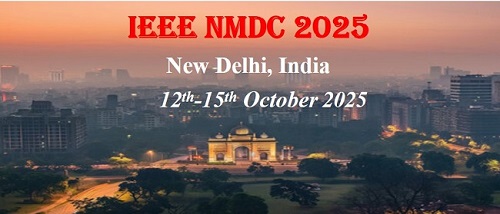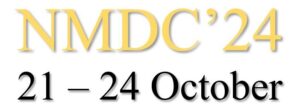Plenary Speakers
| October 21, 2024 3pm | Challenges and Opportunities of Unconventional Computing with Spintronics |
| October 22, 2024 9am | The Development of Multi-Pixel Field Emission X-Ray Devices |
| October 23, 2024 9am | Semiconductor Nanomaterials for Transient Electronics |
| October 24, 2024 9am | 2-Dimensional and Layered Materials for Applications in Energy, Water, and Healthcare |
Title: Challenges and opportunities of unconventional computing with spintronics
Shaloo Rakheja
Associate Professor and Intel Alumni Endowed Faculty Fellow
Director, Center for Advanced Semiconductor Chips with Accelerated Performance (ASAP)
University of Illinois at Urbana-Champaign
Abstract
In contrast to conventional electronics that deal with the charge of an electron, spintronics utilizes the spin of an electron to manipulate, transmit, store and detect information. Spintronic devices can be fabricated using back-end-of-the-line CMOS processes and, therefore, realized in modern fabrication facilities without much re-tooling. Spintronics offers great opportunities for realizing unconventional and domain-specific computing paradigms that have advantages in terms of energy and area efficiency compared to von Neumann computing. Examples of unconventional information processing approaches are neuromorphic computing, probabilistic computing, Ising machines, Bayesian inference, and processing-in-memory, etc.
In this talk, I will discuss the state-of-the-art in diverse spintronic devices including non-volatile digital memory, memristors, p-bits, high-frequency oscillators, and signal modulators, that can enhance the overall circuit functionality of CMOS chips. I will present my group’s recent work in developing multi-physics and multi-scale models that can facilitate the heterogeneous integration of spintronics with silicon. I will use these models to explain recent experimental findings and bridge the gap between physics and applications to unconventional computing and signal processing. I will conclude my talk by summarizing the limits, challenges, and opportunities of spintronics and guiding the development and deployment of most promising “More-than-Moore” and “Beyond Moore” technologies.
Biosketch
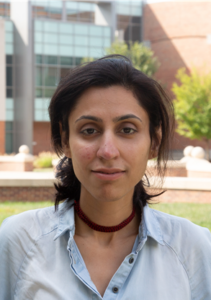 Shaloo Rakheja is an Associate Professor and Intel Alumni Endowed Faculty Fellow in the Electrical and Computer Engineering (ECE) department at the University of Illinois at Urbana-Champaign. She is leading the Center for Advanced Semiconductor Chips with Accelerated Performance (ASAP) – an Industry-University Cooperative Research Center, funded by the NSF, industry, and government and national labs in the nation. She is also the recipient of the NSF Computer and Information Science and Engineering Research Initiative Initiation (CRII) Award, as well as the NSF CAREER Award. Shaloo is an expert in physics-based modeling of nanoelectronic and magnetic devices for energy-efficient computing and communication. She has developed multi-scale models that enable materials-to-circuits co-design for a wide range of technologically relevant applications.
Shaloo Rakheja is an Associate Professor and Intel Alumni Endowed Faculty Fellow in the Electrical and Computer Engineering (ECE) department at the University of Illinois at Urbana-Champaign. She is leading the Center for Advanced Semiconductor Chips with Accelerated Performance (ASAP) – an Industry-University Cooperative Research Center, funded by the NSF, industry, and government and national labs in the nation. She is also the recipient of the NSF Computer and Information Science and Engineering Research Initiative Initiation (CRII) Award, as well as the NSF CAREER Award. Shaloo is an expert in physics-based modeling of nanoelectronic and magnetic devices for energy-efficient computing and communication. She has developed multi-scale models that enable materials-to-circuits co-design for a wide range of technologically relevant applications.
Title: The Development of Multi-Pixel Field Emission X-Ray Devices
John Yeow
Professor University Research Chair in the Department of Systems Design Engineering at University of Waterloo, Waterloo, ON, Canada.
Abstract
The first concept of multi-source Computed Tomography (CT) systems originated in the 1980s, and opened the way to innovative system concepts in X-ray and computed tomography. Multi-source CT systems offer promising opportunities in system performance. In addition, multi-source X-ray radiographic systems are widely studied, namely for X-ray stereographic imaging, X-ray tomosynthesis imaging, and inverse-geometry imaging. One significant benefit of the multi-source X-ray technology is the ability to fabricate the source array in various two-dimensional configurations. The more complicated distributive source topologies are designed to improve the sampling of projection data, to further improve both in-plane and depth imaging resolution within the constraints of the limited-angle acquisition of projection data. In multi-source systems, the X-ray sources are arranged in an array format, and each source is launched individually. However, current X-ray generators are not suited for these systems because of their large size, huge power requirement, and slow response. This talk will focus on the field emission X-ray technology that enables to the realization of multi-source CT systems.
Biosketch
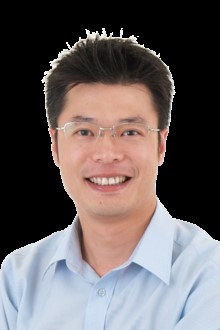 John T. W. Yeow is a Professor and a University Research Chair in the Department of Systems Design Engineering at University of Waterloo, Waterloo, ON, Canada. He is focused on the development of micro/nanodevices for a wide range of applications. He is a recipient of the Professional Engineers Ontario Engineering Excellence Award, Natural Science & Engineering Research Canada Innovation Challenge Award, Douglas R. Colton’s Medal of Research Excellence, Micralyne Microsystems Design Award, Ontario Ministry of Research and Innovation’s Early Researcher Award, University of Toronto Alumni Association 7T6 Early Career Award, 2011 IEEE NANO Excellence Paper award and IEEE Canada Outstanding Engineer Award. He was a Canada Research Chair in Micro/Nanodevices (2004 – 2019). He is a Fellow of the Canadian Academy of Engineering, the Engineering Institute of Canada, Engineers Canada, and a Member of College of New Scholars, Artists and Scientists of the Royal Society of Canada.
John T. W. Yeow is a Professor and a University Research Chair in the Department of Systems Design Engineering at University of Waterloo, Waterloo, ON, Canada. He is focused on the development of micro/nanodevices for a wide range of applications. He is a recipient of the Professional Engineers Ontario Engineering Excellence Award, Natural Science & Engineering Research Canada Innovation Challenge Award, Douglas R. Colton’s Medal of Research Excellence, Micralyne Microsystems Design Award, Ontario Ministry of Research and Innovation’s Early Researcher Award, University of Toronto Alumni Association 7T6 Early Career Award, 2011 IEEE NANO Excellence Paper award and IEEE Canada Outstanding Engineer Award. He was a Canada Research Chair in Micro/Nanodevices (2004 – 2019). He is a Fellow of the Canadian Academy of Engineering, the Engineering Institute of Canada, Engineers Canada, and a Member of College of New Scholars, Artists and Scientists of the Royal Society of Canada.
Wednesday, October 23, 2024 9am
Title: Semiconductor Nanomaterials for Transient Electronics
John Rogers
Louis Simpson and Kimberly Querrey Professor of Materials Science and Engineering, Biomedical Engineering, and Neurological Surgery, Northwestern University, Evanston, IL, USA
Abstract
A remarkable feature of modern integrated circuit technology is its ability to operate in a stable fashion, with almost perfect reliability, without physical or chemical change. Recently developed classes of semiconductor nanomaterials and associated nanofabrication techniques create an opportunity to engineer the opposite outcome, in the form of ‘transient’ devices that dissolve, disintegrate, degrade or otherwise disappear at triggered times or with controlled rates. Water-soluble transient electronic systems serve as the foundations for applications in zero-impact environmental monitors, ‘green’ consumer electronic gadgetry and bio-resorbable biomedical implants. This presentation describes the foundational concepts in nanomaterials science, electrical engineering and assembly processes for bio/ecoresorbable electronics in a variety of formats and with a range of functions. Wireless stimulators as temporary pacemakers for minimizing risks after a cardiac surgery, and remote, small-scale sensors as transient monitors for tracking environmental processes provide some system level examples.
Biosktech
 John A. Rogers is a physical chemist and a materials scientist. He is currently the Louis Simpson and Kimberly Querrey Professor of Materials Science and Engineering, Biomedical Engineering, and Neurological Surgery at Northwestern University and Director, Querrey Simpson Institute for Bioelectronics. He received his Ph.D. in Physical Chemistry from Massachusetts Institute of Technology (MIT), Cambridge, Massachusetts.
John A. Rogers is a physical chemist and a materials scientist. He is currently the Louis Simpson and Kimberly Querrey Professor of Materials Science and Engineering, Biomedical Engineering, and Neurological Surgery at Northwestern University and Director, Querrey Simpson Institute for Bioelectronics. He received his Ph.D. in Physical Chemistry from Massachusetts Institute of Technology (MIT), Cambridge, Massachusetts.
Thursday, October 24, 2024 9am
Title: 2-Dimensional and Layered Materials for Applications in Energy, Water, and Healthcare
David Estrada
Associate Director of the Center for Advanced Energy Studies, Boise State University, Boise, ID, USA
Abstract
The rapidly evolving field of two-dimensional (2D) and layered materials is driving progress across various disciplines. Recent advancements in 2D material-based inks have broadened the scope of additive electronics, benefiting applications such as sensors, energy harvesting, and energy storage. The integration of 2D materials is also making strides in healthcare and water treatment, particularly with flowing electrode capacitive deionization and tissue engineering. Notable developments include Ti3C2Tx MXene inks for aerosol jet printing, which produce high-performance supercapacitors with excellent capacitance. Incorporating MXenes into polymer matrices enhances energy output in extrusion-printed triboelectric nanogenerators (TENGs), while MXene-based electrodes improve ion removal and energy efficiency in capacitive deionization systems. Moreover, applying direct electrical stimulation to 3D graphene foam bioscaffolds has shown improvements in mechanical properties and cellular integration for cartilage regeneration.
Biosketch
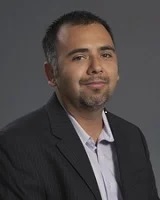 David Estrada is Boise State University’s Associate Director of the Center for Advanced Energy Studies. He is also an Associate Professor in the the Micron School of Materials Science and Engineering at Boise State University. David holds a Joint Appointment with the Idaho National Laboratory as the Advanced Manufacturing Deputy Director for Academic Research. His research interests are in the areas of biotechnology, nanotechnology, and advanced manufacturing. He received the Bachelor of Science in Electrical Engineering from BSU and he began graduate studies at the University of Illinois at Urbana-Champaign (UIUC) under the direction of Professor Eric Pop. He received his Master of Science in Electrical Engineering and his Doctor of Philosophy in Electrical Engineering at UIUC.
David Estrada is Boise State University’s Associate Director of the Center for Advanced Energy Studies. He is also an Associate Professor in the the Micron School of Materials Science and Engineering at Boise State University. David holds a Joint Appointment with the Idaho National Laboratory as the Advanced Manufacturing Deputy Director for Academic Research. His research interests are in the areas of biotechnology, nanotechnology, and advanced manufacturing. He received the Bachelor of Science in Electrical Engineering from BSU and he began graduate studies at the University of Illinois at Urbana-Champaign (UIUC) under the direction of Professor Eric Pop. He received his Master of Science in Electrical Engineering and his Doctor of Philosophy in Electrical Engineering at UIUC.

